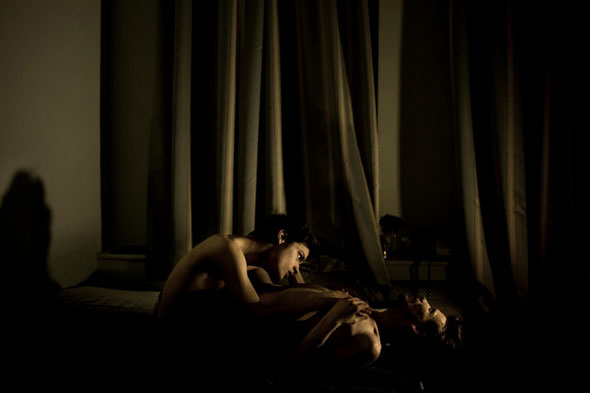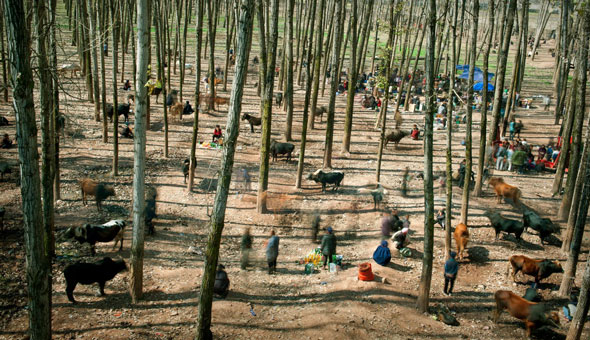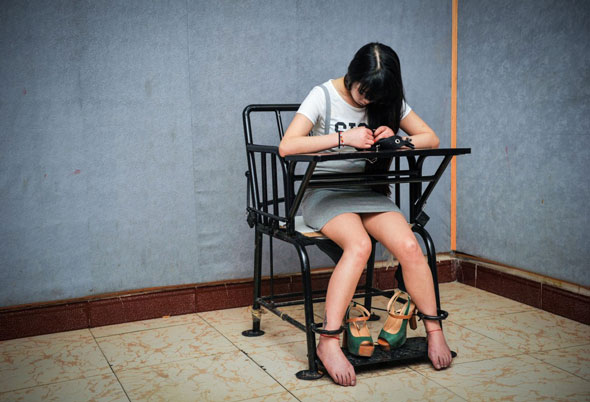Before I dive into today’s topic, in the course of the past weeks I’ve received several alerts from readers that THEME was down in their area. Once it was in Germany, then in the U.K… The question was always: have you given up on the site Dan? Maybe was a server hiccup. Boy I’m not a quitter, it’s just that current priorities demand my full attention. Working not too hard on the site also shows that THEME as a loyal audience tuning in each day to get the latest on rumor and photography news. Rest assured, THEME is here to stay and as things stand now this is maybe just the beginning. This brings me to today’s topic: “Debating the Rules and Ethics of Digital Photojournalism,” as published by the New York Times. It’s a topic that concerns every photographer. Or you never asked yourself whether excessive — and sometimes blatant — post-processing is too freely applied in today’s digital photography?
It still looks like, but is it still a photograph reflecting “reality”? Writes the NY Times:
Significant questions have arisen after a large number of images were disqualified from this year’s World Press Photo competition because of excessive — and sometimes blatant — post-processing. After independent experts examined the images being considered for prizes in the final rounds, and presented their findings to the jury, 20% of the photos were disqualified by the judges. This was often because of significant addition or subtraction to the image content.
We learn that almost three times more images than in last year’s competition got qualified, meaning that quite some professional photographers who make a living from photography think the rest of the world is either a) stupid enough to no longer care about the difference between an untouched and an altered “reality”; and b) that manipulation is considered to be firm part of digital photography.

In fact, even applying a simple filter is post-processing, meaning that analog photography was/is kind of the epitome of post-processing because each roll of film looked different depending on the brand, sensitivity, and so forth. So… if we’re honest there is no analog and no digital photography without post-processing. Photography is always an interpretation, and never the perfect, unaltered representation of a fraction of a second.
So… why shouldn’t post-processing not be allowed in a photography competition? The answer is simple: if the competition is about photojournalism, then it’s clear fraud to suggest a reality that’s clearly different from what happened.
This raises some important questions. A slightly adjusted photograph may look more powerful and convincing, yet a really good photograph needs no alteration. Some of this year’s World Press Photo competition were obviously altered in a way that when compared with the originals one could not recognize them as being the same picture. The jury — which was flexible about toning, given industry standards — could not accept processing that blatantly added or removed elements of the picture.
And professional photographers dared to submit such images.
This not only discredits the whole profession and industry, it shows the bigger picture that news is no longer about what’s really happening, but about how something is perceived. How something fits into the scheme of perception and expectation.

Says jury chairwoman Michele McNally:
Many of the images we had to disqualify were pictures we all believed in and which we all might have published. But to blatantly add, move around or remove elements of a picture concerns us all, leaving many in the jury to feel we were being cheated, that they were being lied to.
Melissa Lyttle, independent photographer:
Learning that World Press Photo had to disqualify 20 percent of the images in the penultimate round because the judges found the image content had been altered is incredibly disheartening. The fact that some photojournalists think any degree of lying and manipulation is O.K., makes me question the message they’re sending to others — as well as the ego they’re stroking and the impossible level of perfection they’re striving for in their own work.
It’s a dangerous and slippery slope to travel down when altered work is lauded, and other photojournalists see that as the ideal. It sets a bar that is unreal, unhealthy and unattainable. And what does it say that we as viewers, editors and judges value these images in the first place? Are we preprogrammed to be drawn to things that really are too good to be true?
Lying is easy, telling the truth is the hard part. Or in other words: producing a post-processed image is a piece of cake. Shooting the real thing, that’s the challenge.

The NY Times article concludes with the recommendation that photojournalists all over the world should download and carefully read The Integrity of the Image by David Campbell. This document, it’s suggested, should be the basis of a Ten Commandments for photojournalism:
- What forms of manipulation are relevant to the integrity of the image? In addition to post-processing of negatives, RAW files or unprocessed JPEGs, it could also includes the framing, cropping, selection, captioning and contextualization of images, among other issues. Should these dimensions also be considered and, if so, how?
- Is manipulation generally a growing problem? If so, how and why?
- Is post-processing itself a problem, or is post-processing a problem only when certain levels of changes are made? If so, how are the legitimate levels known or identified?
- What ethical guidelines and protocols relevant to the integrity of the image are followed by media organisations in different countries?
- What ethical guidelines relevant to the integrity of the image are promoted by professional media associations in different countries?
- Are there national, regional and cultural differences in the ethical guidelines, accepted standards, and current practices relevant to the integrity of the image? Are there any points of consensus on manipulation regardless of geographical or cultural differences?
- Are there different norms with regard to manipulation in different image genres? Are the norms for news and documentary the same as those for nature, sports, and portraits (staged and observed), or are their differences?
- What are the most effective means for the detection of manipulation?
- What sanctions exist with the media industry after manipulation is detected?
- What rules exist within major international photo contests relating to the integrity of the image?
Yours to choose which path to follow.
+++ You can find all the winning photos in this year’s World Press Photo contest in this gallery.


